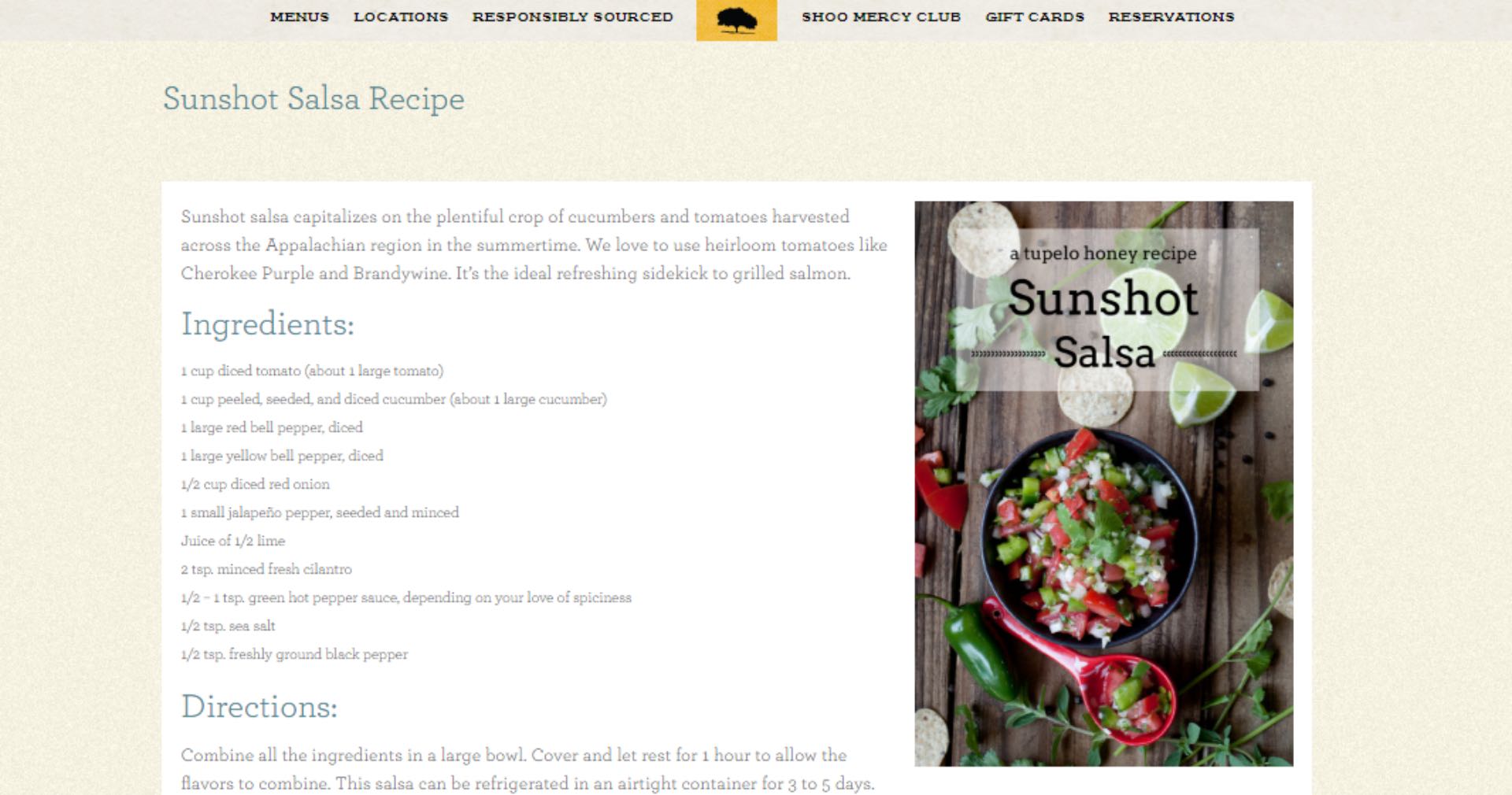Want to grow your website traffic consistently, attract new customers, build loyalty with current customers, and become a brand leader in your space?
Discover the power of a blog.
The benefits are endless.
But be warned: you can’t be lazy or promotional.
The goal is to continually add value by publishing informative, well-written articles created with strategy and customer engagement in mind.
Blogging helps:
- Grow online traffic.
- Nurture and convert customers.
- Keep current customers engaged.
- Differentiate you from other similar businesses.
- Grow demand and interest in your products or services.
The beautiful thing about a blog?
They provide benefits long after publishing.
This is where more outweighs less; the more blogs you create, the more of the above benefits you’ll receive.
That means valuable and engaging content that doesn’t just promote your services or products.
And all must be written with SEO in mind, something I covered extensively in SEO Writing: Top 47 Tips to Master a Combined Art.
Following are seven real ways a blog can help your businesses, plus some examples of companies with blogs that are boosting their businesses right now.
1. Increase Traffic to Your Site
Post frequent and consistent content that drives educational and entertainment value, and you’ll increase your website’s traffic.
More traffic equals more leads for both B2B and B2C companies, whether you’re marketing SEO services or the latest footwear, or have a news-driven website that relies on increased traffic for stronger advertising revenue.
Companies see significant benefits when they blog frequently compared to companies that blog infrequently or not at all.
More people on your site can only mean more potential for reservations/bookings, more submissions to your contact form, and more potential client inquiries.
Stronger website traffic is good for any kind of business – especially for visitors who discovered your content as they were searching for a solution to their problems.
Create content that speaks to your target audience’s pain points, and make sure the headlines accurately describe the content that follows.
2. Attract New Customers
Whether you’re shopping for motorcycle parts or bras, those businesses with consistent and frequent blogging will attract the most attention.
And more attention translates into more new customers (again – if the content adds value!).
Two companies stand out in this area – Roland Sands Design, which provides a fresh feel to aftermarket motorcycle parts and apparel, and Glamorise, a nearly 100-year-old plus-size bra company.
Both update their blogs frequently and provide educational and entertaining content that fuels a searcher’s needs.
How do you do research online before buying a product or service?
You probably use Google or other search engines to research just about every purchase or buying decision, whether big or small.
The more expensive the product or service, the more research is likely conducted.
You’d likely check out every review or news bits available before spending $40,000 on a Ducati V4R, but maybe about five minutes for a pair of $15 Ducati socks.
Finding informative, engaging blog content on the subject can help sway your opinion and ultimately become a factor in your purchase.
While creating a blog strategy may take some time out of your day, it’s going to be worth it.
An educational blog allows your potential customers to research a solution on their own time and contact you when they’re ready to purchase.
Here are a few examples:
- A pest control company can provide information about local pests and the DIY solutions for battling these pests while keeping safety from chemicals in mind.
- An apparel company can post weekly or monthly style predictions and outfit tips per season.
- A tax consultant’s business could benefit from the expected and considerable upturn in tax-related searches at certain times during the year and provide keyword-optimized tax advice (see the Google Trends screenshot below for the phrase “tax help”).

Remember, it’s essential to create blogs with SEO best practices in mind and be relentless about promotion across social news channels and newsletters.
This will ensure that your blog acts as a round-the-clock tool for nurturing customers and potentially bringing in leads.
Make sure every blog post inspires action of some kind or another, so include CTAs throughout.
Depending on your business, you might want people to read another related piece of content, fill out a form to get a quote, call you to set up a consultation or click an advertiser’s ad to improve ad impressions.
Industry Example: Legal Blogging
If you work at a law firm, there’s no question that potential customers are looking for legal services online.
Many of them are primed to move forward as soon as they find what they’re looking for.
A blog with optimized posts containing legal advice and topics related to your area(s) of practice can attract people to your website at precisely the right moment and up the chances that they’ll choose to work with you.
This example from the Joye Law Firm shows a well-designed blog with a wealth of useful information and plenty of opportunities to contact the firm.

3. Expose Your Business to the Readers Seeking Fun
Many business blogs are need-based, meaning the content provides answers to questions and connects readers to the solution.
But want-based blogs also exist, focusing more on stimulating demand for something your readers didn’t know they wanted at first (think natural relief products, food, clothing, and wellness products).
These want-based blogs are built for those who want to read at their leisure, some content to entertain them during their spare time.
This type of content is a bit more challenging to create.
The key is to make these blogs interesting and engaging enough so that people want to read them for entertainment – just for fun.
The key is to make your content interesting and engaging enough that people will want to read them for fun.
Over time, you can create a connection with your readers through the tone and content of the blog that will eventually foster brand loyalty.
Think like a lifestyle news channel, such as Esquire, Playboy, or Popular Mechanics.
Offer content that entertains, but centers around your product or services.
Here are some examples:
None of the products or services sold by the company’s above (platform for photography, cooking supplies, trendy clothes) are truly needs – but rather wants.
Because of this, their blogs are lifestyle-based and meant to create and nurture a community and show how their solutions could enhance people’s quality of life.
Industry Example: Restaurant Blogging
If you’re a restaurant owner and don’t have a blog, you’re missing out on a huge opportunity.
While people may read legal and real estate blogs when they need advice, people read about food for fun.
The hashtag #food is on over 200 million Instagram posts. “Food and Drink” is the top Pinterest category.
Restaurants are the perfect entities to run food blogs that can be a destination in and of themselves.
This screenshot from the blog of Tupelo Honey Cafe, a popular brunch spot with locations throughout the South, shows a highly shareable copycat-recipe blog post complete with an optimized image for reposting on Pinterest.

The blog also features information about new meals at the restaurant and roundups of customer pictures from Instagram.
This blog succeeds because it’s not only a visually stunning and useful blog that’s perfect for browsing, but it’s also a low-key, non-aggressive advertisement for Tupelo Honey’s delicious-looking food.
4. Show & Tell What Your Business Can Do
For many businesses, such as personal trainers, home contractors, landscapers, web designers, etc., a blog can act as an ongoing portfolio of past work.
This is ideal for companies that thrive on proof of past successes, such as the businesses listed above.
It’s essential to have an easy way to show potential clients what kinds of results they can expect.
A blog can achieve just that, and then some.
With a blog and a few attractive photos about your work, you can easily create an impressive portfolio and drive your customers there.
While it may take more effort to update your whole site, depending on how it was created, blogs on content management systems such as WordPress are generally easy to update, even if you don’t have a lot of technical knowledge.
If you can publish a Facebook post, you can publish a blog on WordPress.
If you need help, plenty of free and valuable advice exists (another example of the usefulness of blogs!).
Once you’ve started cataloging your work on your blog, you have a simple link to send people who want to get a sense of the quality and efficacy of your work.
Industry Example: Home Improvement Blogging
With the popularity of home improvement and DIY shows, you know that people love a good home renovation story.
If you’re a home contractor, using your blog to show off impressive projects you’ve completed helps people visualize what their homes could look like after a remodel.
Home improvement company Haskell Interiors’ blog includes case studies of past client work and home improvement tips.
The effect of the high-quality before and after pictures and the detailed project descriptions is compelling enough to make anyone consider a remodeling project.

5. Give Your Business Results Long After the Initial Post
This is one of the most undiscussed benefits of blogs – they continue to attract new leads and customers well into the future – sometimes years.
HubSpot reports that more than three-quarters of their blog views are from older posts. Even better, those old posts help to collect the vast majority (over 90%) of their leads.
While it’s still essential to create new posts, older posts can remain relevant to your readers for a long time.
Old blog posts that have gained authority/ranking over time and are bringing in a reasonable amount of organic traffic can also be easily updated to serve current campaigns/goals.
This is why it’s a great practice to keep older blogs fresh with recent data and newer links.
Sometimes all it takes are a few small tweaks for the blog to retain its usefulness and continue to bring in qualified leads.
6. Build Your Network Within Your Niche
When most businesses think of blogging, they focus on the customers.
Rarely do they think about the networking possibilities that an established blog can create.
Every niche has a handful of trustworthy and valuable blogs – think about the hundreds of digital marketing blogs.
Only a handful stand out, and they all feature consistent and frequent blogging. You can bet they are the ones with the most significant client portfolios and strategic partnerships.
Many companies track the content their competitors release. Following a blog feed is the simplest way to see what others are doing.
Observing what others blog about helps a business remain competitive. But it also helps establish strong networking advantages with others within the niche.
Many of these relationships can result in:
- Additional shared or linked blogs.
- Invites to industry events (such as Pubcon within the digital marketing world).
- Even entire buyouts of companies.
7. Build a Flow of Trust
When a business establishes trust, its reputation spreads more quickly.
Stephen R. Covey, the author of “The Seven Habits of Highly Effective People,” a must-read for anyone in business, says, “When the trust account is high, communication is easy, instant, and effective.”
Frequent and consistent blogging is the simplest way for your brand to build this trust.
When you develop highly valuable content that adds value to continually adds value to your readers, your brand will become, as author John Hall says of the same-titled book he wrote, “Top of Mind.”
Trust is not quickly established, but once a reader discovers a blog flowing with endless value, they’ll naturally trust that business.
And eventually, this will lead to them becoming a customer – likely a lifetime one all based on a flow of valuable content.
Start Blogging Effectively for Business
The power of the blog is endless. It’s beneficial, no matter where your customers are in the purchasing process.
Try adopting one or more of the examples here for your own business.
Be sure to track and measure your results, and always keep older blogs refreshed with new data and links.
Effective blogging will help you attract and nurture leads, then capture and engage with new and existing customers.
If done correctly, your website’s blogging efforts may produce the most profitable results for your business.
But also remember the power of guest blogging on relevant websites within your industry.
This can compound your content marketing efforts while providing all of the seven benefits above.
More Resources:
- 3-Step Blog Strategy That Works: Storytelling, USPs & Sales
- 25+ Unique Blog Post Ideas to Engage Your Readers
- How to Optimize Your Blog Content for People Who Skim
Image Credits
All screenshots taken by author, August 2020





![AI Overviews: We Reverse-Engineered Them So You Don't Have To [+ What You Need To Do Next]](https://www.searchenginejournal.com/wp-content/uploads/2025/04/sidebar1x-455.png)